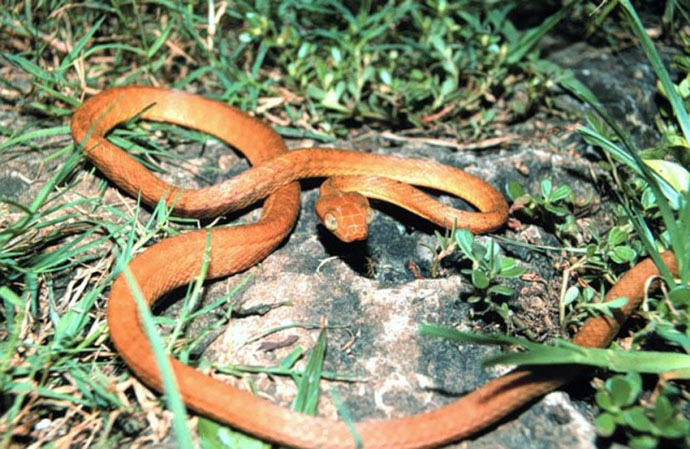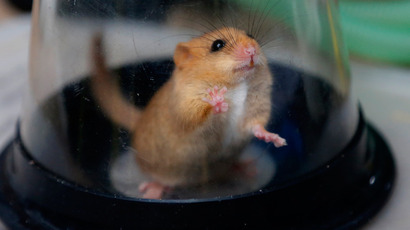US aircraft bombard Guam with thousands of mice

Jumping out of a plane and into enemy territory, hanging from custom-made parachutes, lying in wait for your enemies: It’s probably the most nerve-wracking experience anyone can have – unless you’re already dead and stuffed with painkillers.
That’s essentially the situation that unfolded in Guam on Sunday, when the United States bombarded the island with 2,000 dead mice for the fourth time, all in an effort to lure in and kill off the territory’s invasive brown tree snake.
Attached to small cardboard parachutes, the dead rodents floated down over the forest canopy near Anderson Air Force Base, where they’re expected to attract brown tree snakes looking for an easy meal. As with anything that sounds too good to be true, however, the snakes are in for a rude awakening: Each mouse has been filled with acetaminophen, commonly found in Tylenol, which is deadly to the reptiles even in small doses.
"We are taking this to a new phase," Dan Vice, an assistant state director of the U.S. Department of Agriculture's Wildlife Services, said to the Associated Press. "There really is no other place in the world with a snake problem like Guam."
Vice also told KUAM News that the acetaminophen dosage does not pose a risk to other animals, saying that a pig or dog would be safe unless they ate at least 500 of the stuffed mice. The snakes, on the other hand, are expected to die within 72 hours of ingesting a mouse.
The brown tree snake – suspected to have arrived on the island
via poorly inspected cargo shipments during the 1950s – may not
be a danger to humans, but it has caused numerous problems since
it established itself in Guam. As RT reported previously, the snakes have endangered or
wiped out nearly all of the island’s native bird species,
indirectly affecting even the local tree population that benefits
from birds spreading seeds.

In addition to the toll enacted on wildlife, NBC News reported the snakes cause about 80 electrical outages a year when they slither into electrical substations. The cost of repair and lost productivity numbers around $4 million annually. Reports of the reptiles biting humans are also on the rise, though their venom is not lethal.
Estimates indicate that more than 2 million brown tree snakes inhabit Guam, with as many as 13,000 per square mile in some areas. While other methods have proved inadequate, U.S. officials are hoping to expand the mice-dropping program across the island if it’s deemed successful.
Containing the snakes has become a priority for Vice, who has said in the past that it’s “inevitable” the animals will eventually reach Hawaii, some 3,000 miles away from Guam, where they could inflict up to $2.14 billion in economic damages in addition to damaging local wildlife populations.
Despite the risks, however, the plan to “bomb” the island with dead rodents has caused a stir among animal rights activists. It has drawn condemnation from People for the Ethical Treatment of Animals, which would prefer the snakes to be captured and humanely euthanized.
“Brown tree snakes did not ask to be stowaways on planes or ships and then forced to survive on a foreign island,” Martin Mersereau, director of PETA’s cruelty investigations, said in February.
“Although the snakes are considered invasive, no animal should be forced to endure cruel death,” he added.














